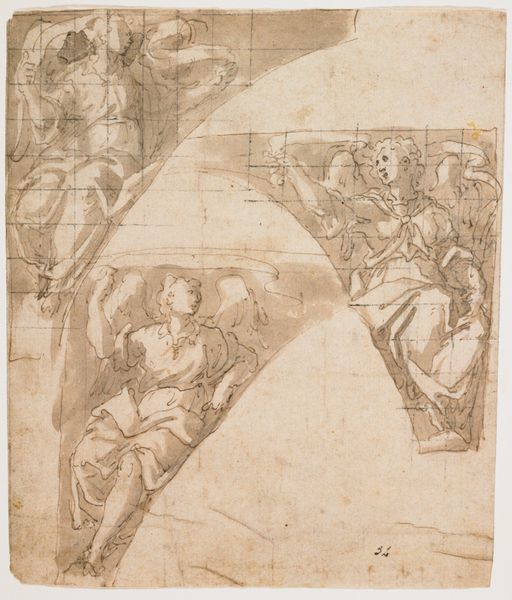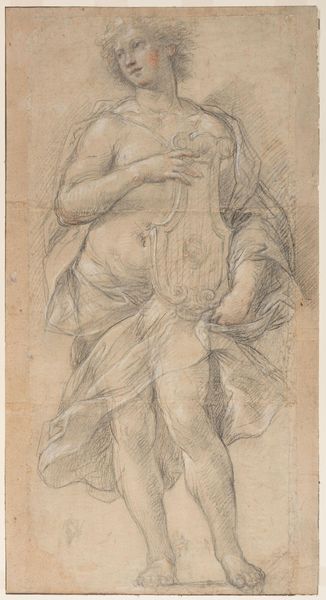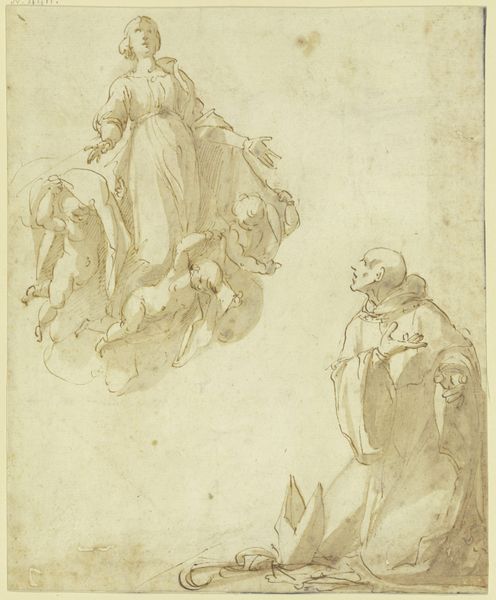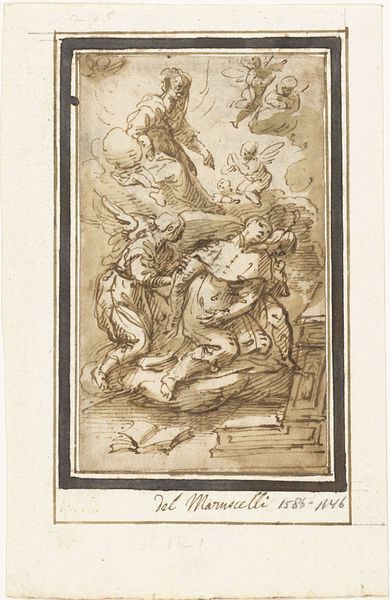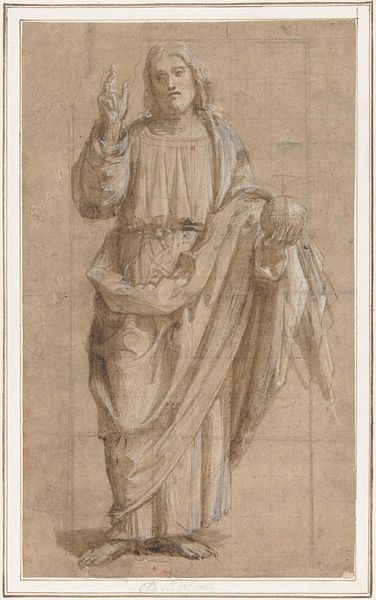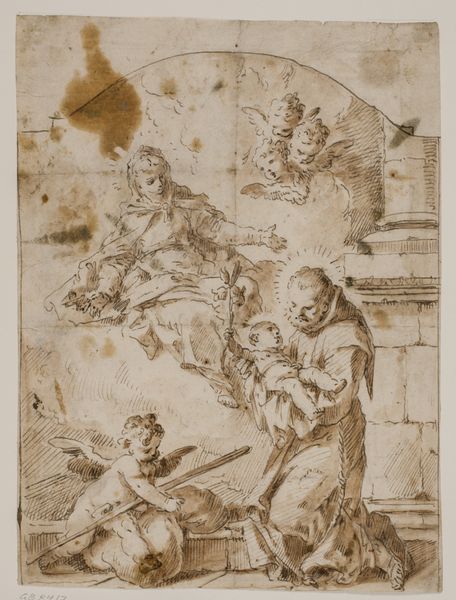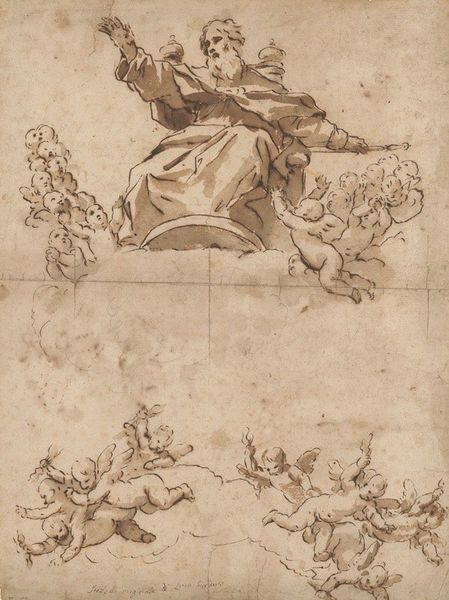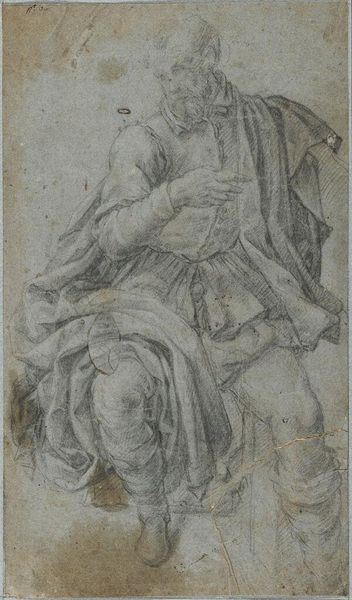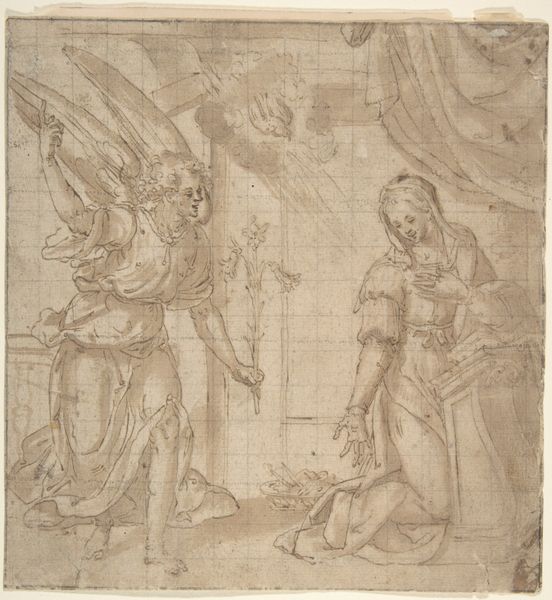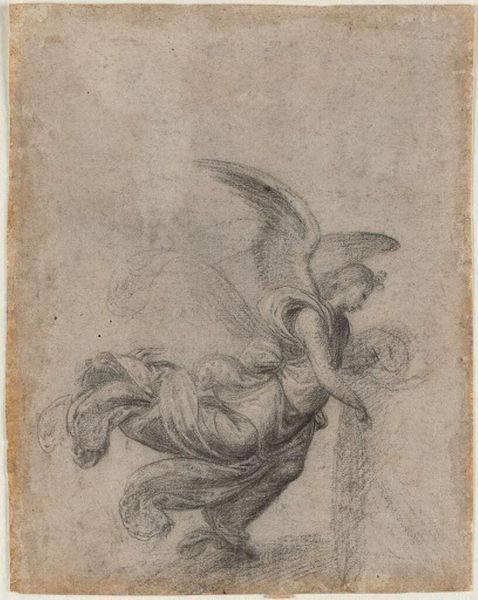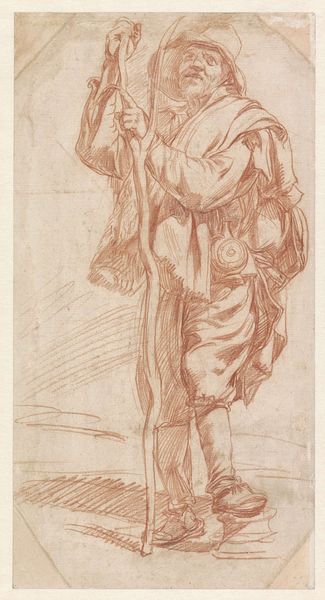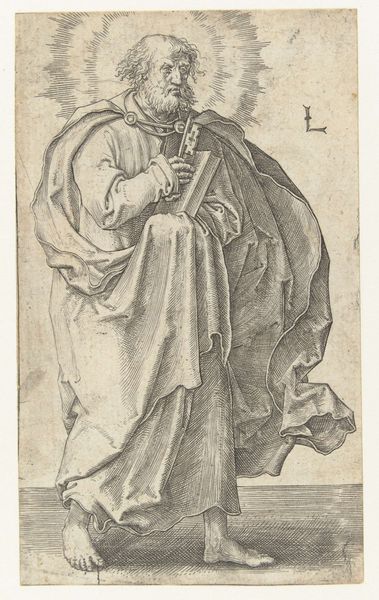
drawing, pencil
#
drawing
#
narrative-art
#
figuration
#
11_renaissance
#
pencil
#
history-painting
#
italian-renaissance
Dimensions: height 302 mm, width 208 mm
Copyright: Rijks Museum: Open Domain
Curator: Ah, here we have Giulio Romano's "The Annunciation, with God the Father," dating from between 1510 and 1546. It's a Renaissance drawing, pencil on paper, and part of the Rijksmuseum collection. Editor: Wow. First thing that hits me is the ethereal quality. It’s as if the whole scene is sketched on a cloud, ready to vanish with a puff of breath. There's a beautiful, anxious energy. Curator: Anxiety is key here, absolutely. The Annunciation was a popular subject, depicted across Europe. Romano's piece highlights this pivotal moment through very intentional staging and perspective, wouldn't you say? Editor: It feels both timeless and of its time. Like seeing a dream caught in Renaissance clothing. God the Father almost floats; the angel descends with such urgent grace. Mary's pose is not just submission, it's almost terror or shock. I feel that immediacy. Curator: Right. The history behind these depictions really shows. Look how the composition borrows from theatrical traditions, placing Mary downstage to amplify her emotional state and response to a celestial pronouncement. We see here how divinity makes its grand entrance onto the human stage, but on paper. Editor: And such raw paper! The unfinished quality adds to that immediacy. It’s like catching the artist in the act of creation, a glimpse into the divine spark…or a divine intervention. It’s the rawness against this grand spiritual theme. That juxtaposition creates a delightful friction. Curator: It highlights a period when religious dogma was experiencing tension alongside the emergence of artistic personalities and workshops of the High Renaissance. The figure of God is particularly revealing, situated spatially but removed temporally from Mary's experience. Editor: You've placed a perfect narrative framework on the work. For me, the pure simplicity—the figures emerging from the void, that's where its enduring magic is found. This work stays alive. Curator: I’d say the paper breathes, even now, with the dialogues Romano opened so long ago. Editor: Yes, absolutely, and thanks to your insight, those dialogues expand and change for those open to hearing them.
Comments
No comments
Be the first to comment and join the conversation on the ultimate creative platform.
